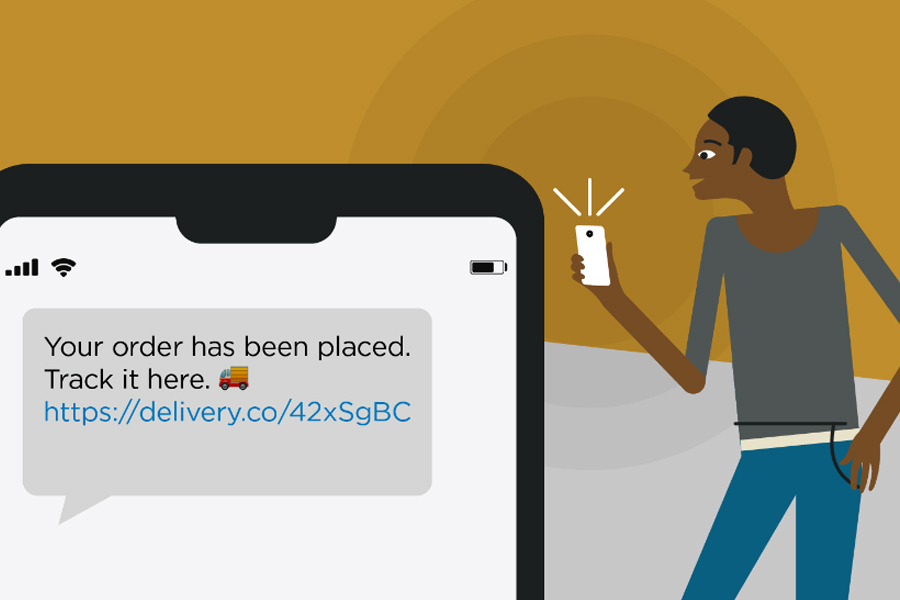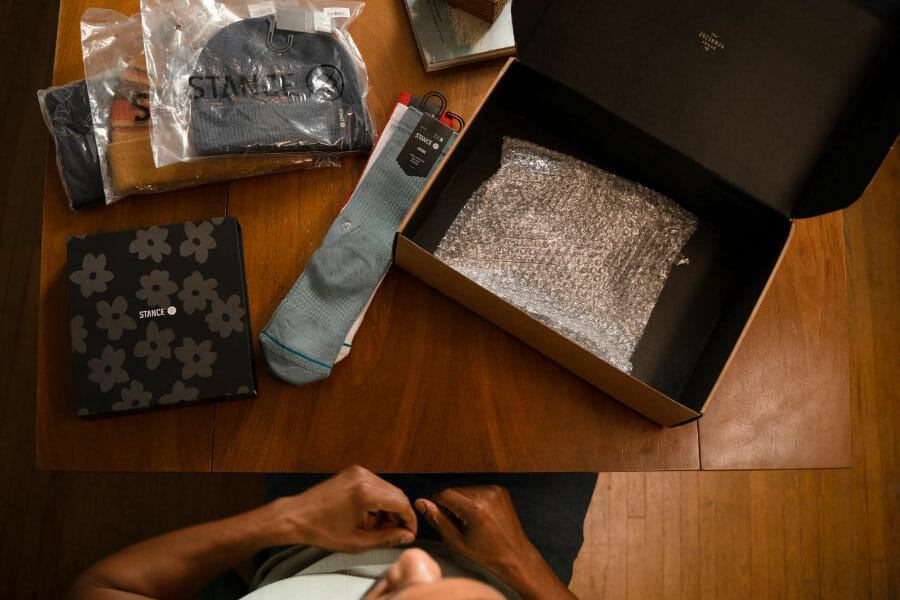Logistics
Industries
Technology & Innovations
E-commerce
E-commerce Fulfillment Services
Lease & Maintenance
Semi Trucks
Logistics
E-commerce
Lease & Maintenance
Buy Used Trucks

[Updated post from January 27, 2021]
While there has always been a post-purchase journey, the post-purchase 'experience' is a relatively new concept.
In a strictly offline world, post-purchase engagement typically came in the form of marketing inserts, shopping bags, and (dare we say it) mailed brochures.
In the digital era, the post-purchase customer experience looks quite different.
Although it's common knowledge that retaining customers is far more cost-effective than acquiring new ones, robust post-purchase strategies continue to be overlooked in the e-commerce sector. When 4 out of 5 consumers have switched brands due to poor experiences, brands simply can't afford to neglect their post-purchase customer journey.
In this post, we're going to explore all things post-purchase journey: what it is, why it matters, and tips for creating a seamless experience for existing customers and first-time customers alike via the fulfillment process.
So, your customer has just purchased a product. Great! Now what?
For many brands, the focus is on driving new sales. Numbers are up so there's nothing to worry about, right? Well, not exactly. This approach leaves out a key part of the customer lifecycle - everything that occurs after that 'buy' button is clicked (also known as the post-purchase experience).
Simply put, the post-purchase phase is the 'now what?' of how a brand interacts with a customer after they've completed a purchase.
The post-purchase journey varies for each brand, depending on their selling channel and target audience. It can be personalized text messages, email campaigns, a branded returns portal, experiential packaging with QR codes, and more.
From the standpoint of customer retention, the post-purchase experience has a lot more significance than the pre-purchase stage. Customers who receive love and attention after they've already purchased a product will be more inclined to purchase from your brand again. Yet post-purchase strategies still have far less investment than sales.
Picture this: you've just purchased a pair of shoes you've had your eye on for quite some time. You researched for weeks and finally decided to go ahead and buy. Now, you're ready to track your order until it safely arrives!
A few days go by, and you haven't received any communication from the brand with tracking information or a support option. You find yourself wondering: Is my product on its way? Did I get scammed?
This is the epitome of a terrible post-purchase experience. Why? There was no communication or TLC during the most pivotal part of the customer's journey - when they're eagerly awaiting the arrival of an order and are highly receptive to communication.
It's clear in this example that a merchant's work isn't finished with a completed purchase. In fact, the stakes become that much higher for building customer loyalty and securing a repeat purchase. When businesses half their dialogue after the purchase confirmation, they miss out on valuable opportunities to strengthen their relationships with customers.
Alternatively, when business make the effort to maximize touchpoints after a transaction, it's far more likely that they will see first-time customers become repeat business.
While wholesale or retail fulfillment removes some of the control over the post-purchase experience, direct to consumer (D2C) fulfillment opens the doors to unique post-purchase experiences.
DTC fulfillment gives brands visibility into every stage of an order, including the post-purchase phase. This means they can easily create rules that trigger specific communications with their customers based on where they're at in the post-purchase journey.
In addition to personalized communication, DTC fulfillment also enables brands to deliver creative unboxing experiences. Rather than a bag with a department store name on it, a DTC order could include branded packaging and informational pamphlets about the company and the product.
Last but certainly not least, DTC fulfillment lays the foundations for additional purchases. Not only does a DTC brand have more customer data at its fingertips; it can also craft an entire delivery process that encourages customers to come back. Whether it's discounts on their next purchase or stellar communications, customers will notice what's available to them during their post-purchase experience.
It's clear that direct to consumer fulfillment allows brands to have more control over communication, design, packaging, and engagement - the keys to a seamless post-purchase experience.
What is the first thing that customers will want to know after they purchase a product? It's called WISMO: where is my order?
To get ahead of this inevitable question, brands can look into providing multiple shipping options for their customers to choose from at checkout, like an expedited 2-day delivery with a estimated arrival date.
Even if they end up getting their package a day earlier, they'll at least know the last possible date it will arrive. Additionally, offering specific-day delivery is a great way to diversify your shipping options and allow your customer to take complete control of their post-purchase experience.
Ultimately, delivery plays a huge role in a customer's post-purchase experience. Without a positive delivery experience, customer satisfaction is bound to take a hit. It's up to e-commerce brands to understand which delivery options work best for their audience and develop a strategic approach.
Your customer is going to have a range of queries immediately after a sale has taken place. How - and when - you answer these questions will make or break the post-purchase experience.
When will my order arrive? How do I return an item if it isn't right? Where can I make contact if a problem comes up?
During the post-purchase experience, it's your job to pre-empt their concerns and guide them through the delivery process as efficiently as possible. This is where communication channels like email and SMS become one of your best tools.
Notifications related to order and shipping notifications receive some of the highest email opening rates – as high as 107%! This makes them an especially effective form of post-purchase communication. Furthermore, they save your brand money and your customer support team time spent dealing with customer inquiries.
For the most seamless post-purchase communication, brand will want to leverage their 3PL's WMS and OMS technology. For example, with the Ryder E-commerce brands have the ability to set up automatic notification emails for a variety of updates such as order shipments, tracking information, and return processes – and even a simple ‘thank you for ordering' to show your appreciation. It's the small touches which often count for the most!
The way we conceptualize the post-purchase journey is still heavily influenced by brick-and-mortar experiences (branded packaging and materials you can see, feel, and touch). Yet there's a critical difference in e-commerce; the delay between purchasing and receiving a product.
But fulfillment and shipping lead times don't have to be a disadvantage. The delay between when an order is placed vs. received works is an advantage of brands that deliver a memorable unboxing experience.
If you can turn the often-mundane moment of delivery into an exciting encounter, you're far more likely to foster customer loyalty.
Branded packaging is one of the most effective post-purchase strategies. It makes a positive impression during the most pivotal part of the entire customer lifecycle: Receiving the product. According to Bouvier Kelly, over 50% of consumers say they would make more purchases from a brand that uses custom packaging, while 61% say that it makes them more excited about receiving their order.

In short, product presentation can help brands exceed customer expectations and create a powerful incentive for repeat purchases.
If you're considering investing in branded packaging, Ryder is on hand to connect e-commerce brands with experienced partners who can create the perfect packaging strategy for your needs. Best of all, this can be integrated directly into the fulfillment process at our warehouse, which means minimum stress and hassle.
Imagine a customer purchases a few beauty products from a brand and excitedly awaits their arrival. Delivery day comes along and they open their package to find more products than they expected.
Not only are they delighted and surprised, but they'll have even more of a reason to purchase again. A win for both the brand and the customer.
Product samples aren't just free hand-outs. When done properly, product sampling is an extremely effective marketing strategy - it keeps customers coming back and introduces new customers to your brand. How? User-generated content (UGC) and word-of-mouth marketing.
Plus, sampling products in e-commerce is a great way to test the waters with new inventory. Something as simple as a test tube of lipstick with a QR code or an SMS asking for feedback could help a beauty brand gather valuable insights for its upcoming launch.
As long as brands take a calculated approach, offering personalized product samples is quite an easy way to stand out in a saturated industry. It adds value to a delivery experience that can be notoriously anti-climactic.
It's not unusual for customers to experience anxiety when purchasing online. The best solution to alleviate this? Offering hassle-free returns. This makes consumers much more likely to commit to purchasing in the first place, and offers your business a valuable opportunity to build a stronger rapport with your customer during the post-purchase journey.
In e-commerce, returns are an inevitable part of the business. There are a variety of reasons why your customers may want to return items, so this shouldn't be viewed as a reflection of your brand. In fact, as many as 92% of consumers say they will buy from a brand again if the returns process is easy the first time around.
By offering a streamlined solution to returns and exchanges, it shows your community that you're committed to a positive customer experience, bolstering perceptions of you as a convenient and trustworthy vendor.
As a busy merchant, it's essential to have an efficient and proactive returns system. Using Ryder's customizable returns workflow, brands have the option to include a returns link within their post-purchase emails, rather than the customer having to request it once a problem becomes apparent. This creates a much more efficient system that gives your customer greater confidence in your operation and the customer experience they'll receive.
We've said it before and we'll say it again: the customer journey doesn't end when the sale is completed. As customers eagerly await the arrival of their order, they'll be on high alert for communication from your brand. This alone is the perfect chance to nurture both new and existing relationships.
The post-purchase stage offers your business some of the most valuable opportunities to provide a stellar customer experience, build trust, and boost customer retention. In such a saturated marketplace, it's vital that you leave them with a positive impression that outlasts the initial thrill of a new purchase.
As a key part of the order fulfillment process, it's in your best interest to make the post-purchase customer experience as smooth and cohesive as possible. By partnering with an experienced 3PL like Ryder, you'll have the flexibility to configure your entire order fulfillment and post-purchase strategy according to what works best for your business and your customers.